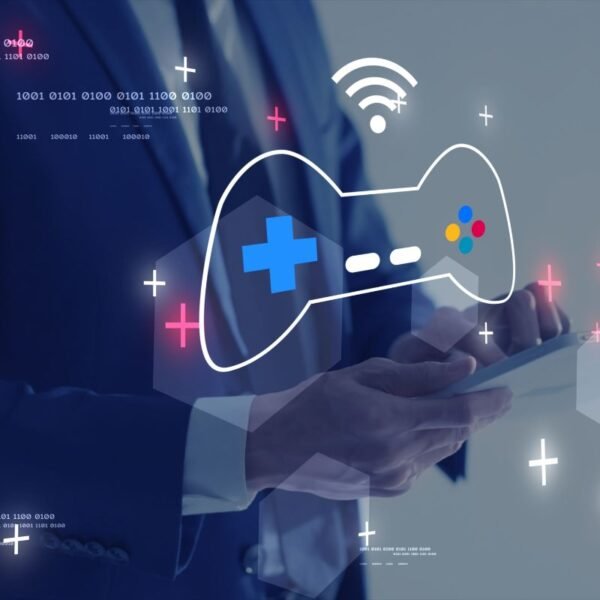Source-Freepik
Communication is at the heart of human interaction, and for individuals with speech or communication challenges, access to effective tools is essential. Augmented Communication Devices (ACDs) are revolutionary technologies that bridge the communication gap, offering a voice to those who need it most.
Let’s explore the world of Augmented Communication Devices, their impact on the lives of users, and how they are transforming the way we connect and communicate.
Understanding Augmented Communication Devices
Augmented Communication Devices, often abbreviated as ACDs, encompass a range of tools and technologies designed to assist individuals with communication difficulties. These devices are instrumental in enabling users to express themselves, participate in conversations, and engage with the world around them.
Key Components of Augmented Communication Devices:
- Communication Boards: Static or dynamic boards with symbols, letters, or words that users can point to or touch to convey messages.
- Speech-Generating Devices (SGDs): Electronic devices that generate speech when users input text or select pre-programmed phrases.
- Tablet and Smartphone Apps: Specialized applications that offer text-to-speech, symbol-based communication, and other communication support features.
- Eye-Tracking Systems: These systems use eye movements to select symbols or words, converting them into spoken language.
- Picture Exchange Systems (PECS): A system that uses images or pictures to facilitate communication and language development.
Who Benefits from Augmented Communication Devices?
ACDs are invaluable tools for a wide range of individuals, including those with:

- Speech and Language Disorders: People with conditions such as aphasia, apraxia, and dysarthria can benefit from ACDs.
- Autism Spectrum Disorders: ACDs are commonly used to support communication and social interaction in individuals on the autism spectrum.
- Cerebral Palsy: ACDs help those with cerebral palsy express themselves and engage with others.
- Degenerative Conditions: Individuals with degenerative conditions like ALS (Amyotrophic Lateral Sclerosis) use ACDs as their speech deteriorates.
- Communication Challenges: ACDs can be a lifeline for people with communication difficulties resulting from injuries or illnesses.
The Impact of Augmented Communication Devices
The adoption of ACDs has profound effects on the lives of individuals who rely on them:
- Empowerment: ACDs empower users to express their thoughts, needs, and emotions, granting them a sense of control over their lives.
- Enhanced Quality of Life: Users can actively participate in social activities, education, and the workplace, leading to an improved overall quality of life.
- Improved Social Integration: ACDs facilitate interaction with peers, family, and friends, reducing feelings of isolation.
- Educational Support: ACDs are instrumental in educational settings, aiding in language development and academic progress.
- Professional Inclusion: ACDs enable individuals to enter the workforce and contribute to society.
Types of Augmented Communication Devices
ACDs come in various forms to cater to diverse user needs:

- Low-Tech Solutions: These include communication boards, books, or cards with symbols or pictures that users can point to.
- High-Tech Solutions: Speech-generating devices (SGDs) like tablets and dedicated communication devices are high-tech ACDs.
- Apps and Software: Numerous apps and software options, often available on tablets and smartphones, provide communication support.
- Eye-Tracking Devices: These devices use eye movements to select symbols or words for speech generation.
- Custom Solutions: Some users benefit from tailored ACDs designed to meet their specific communication requirements.
Challenges and Considerations
While ACDs are transformative, they come with challenges that users and caregivers need to address:
- Cost: High-tech ACDs can be expensive, and not all users have access to insurance coverage or funding.
- Learning Curve: Users and caregivers may require training and support to maximize the effectiveness of ACDs.
- Customization: Finding the right ACD and customizing it to a user’s specific needs can be a complex process.
- Maintenance and Upkeep: ACDs may require periodic maintenance, software updates, or repairs.
The Future of Augmented Communication Devices
The future of ACDs is promising, with several exciting developments on the horizon:

- Artificial Intelligence: AI integration in ACDs will enhance predictive text and context-aware communication.
- Wearable Technology: Smaller, more wearable ACDs will offer users greater mobility and convenience.
- Multimodal Communication: ACDs will become more versatile, combining multiple modes of communication such as speech, symbols, and gesture recognition.
- Global Accessibility: Efforts to make ACDs accessible and affordable worldwide will continue to expand.
Conclusion
Augmented Communication Devices have revolutionized the way individuals with communication challenges connect with the world. They empower users to express their thoughts, emotions, and needs, leading to an enhanced quality of life and greater social integration. While challenges exist, the future of ACDs promises further advancements, increased accessibility, and a brighter future for individuals who rely on these transformative tools. As technology evolves, ACDs will continue to serve as bridges to more inclusive and connected communities.
As technology continues to advance, the potential of Augmented Communication Devices is boundless. Artificial intelligence integration will make these devices even more intuitive, anticipating users’ needs and providing context-aware communication. Wearable ACDs will become smaller and more inconspicuous, ensuring users’ comfort and convenience in their daily lives.
The development of multimodal communication, which combines various modes such as speech, symbols, and gesture recognition, will offer users more ways to express themselves. Furthermore, ongoing efforts to increase global accessibility and affordability will open new doors for individuals around the world, ensuring that everyone has the opportunity to connect and communicate effectively, regardless of their communication challenges. The future holds the promise of a more inclusive and connected world, where Augmented Communication Devices play a pivotal role.









